At the end of every year, Criteo releases our big predictions for the future of digital marketing. It’s a great time to reflect on what’s starting to emerge and what we expect to happen across the marketing landscape.
From GDPR adaptations and video ad spend to data collaboration and AI usage, we believe that data is going to be the center of almost every new innovation. But not just the data itself—we’re going to see different ways of how data is treated, secured, collected, and used.
In Criteo’s ebook, Marketing in 2020: 7 Big Predictions for the Future of Digital & Data, we asked senior leaders in the company what they expect to see by 2020. Here’s a sneak peek of what they said:
1. GDPR will drive data protection legislation globally.
Since the introduction of GDPR in Europe in May 2018, many industry leaders, trade bodies, and legislators are now in favor of setting up similar privacy laws in the US and other regions.
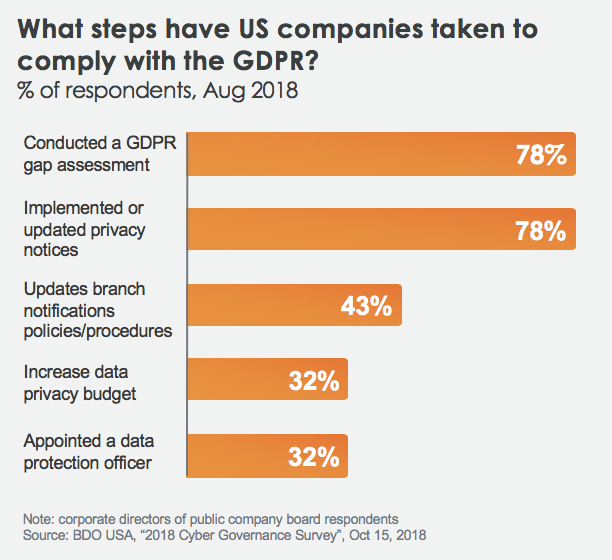
Impact in 2020: Best practices on data usage will be established.
More than ever, marketers have started to think through what they need to do to manage customer data carefully. While GDPR started in Europe, any company that does business in Europe is required to follow the legislation. To learn more, check out our GDPR Hub.
2. Walled gardens will come under greater scrutiny.
With so many incidents involving data breaches, tech giants have come under greater scrutiny regarding how they share and protect user data, their corporate footprints, and the taxes they pay. Europe’s competition commissioner Margrethe Vestager imposed a fine on Google in July 2018 and has ordered a probe into Amazon’s use of data.
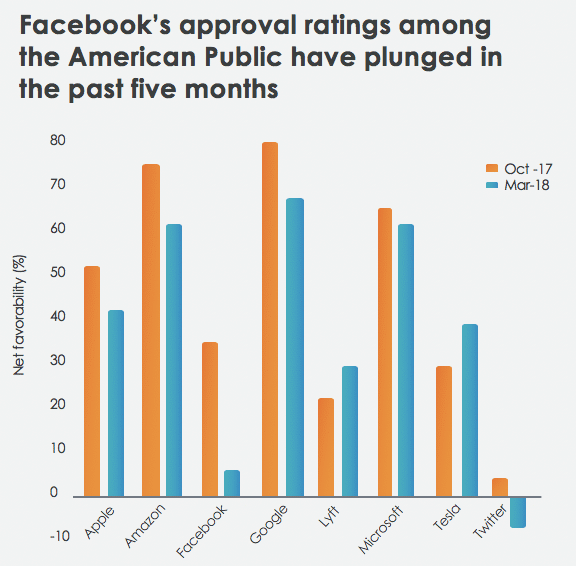
In 2019, expect Facebook, Google, and Amazon to introduce new policies on data sharing and user privacy, which will likely lead to them setting up even tighter controls on their user data and the information they share with advertisers.
Impact in 2020: Consent management will be prioritized.
Walled gardens will have to find better and clearer ways to gain user consent on how, and for what purposes, their data will be shared and/or used. Increased scrutiny of their policies and operations will likely lead to even tighter control of user data shared by these tech giants.
3. Video ad spend will soar.
Private Marketplaces (PMPs) will win a growing share of video ad spend as marketers aim for premium inventory and better performance by displaying video ads on high quality sites.
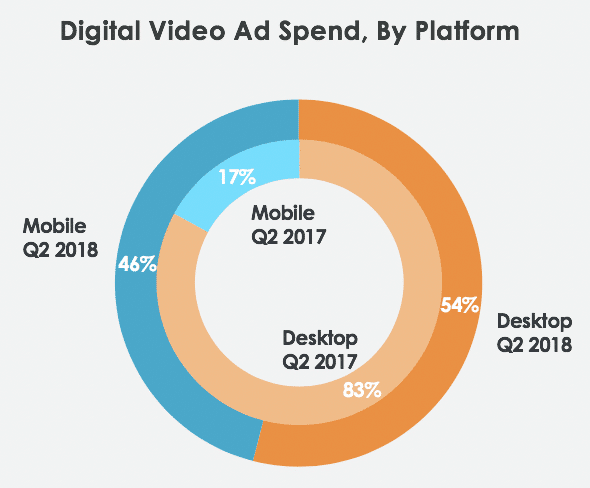
Note: Private Marketplaces (Google calls it Programmatic Direct) refer to a ‘private environment’ in an exchange that allows advertisers and publishers to carry private auctions, and sign one-on-one preferred deals and guaranteed deals.
On smartphones, video content is most often being watched by users via their popular apps. That means apps are primed to make up an increased share of video ad spend in 2019.
Impact in 2020: Demand will soar for OTT video inventory.
More people than ever are streaming content, for more hours in the day. A survey conducted by Pew Research Center revealed that 45% of Gen Z says they are online almost constantly
in the future, PMPs will drive even more video ad spend through programmatic advertising channels. Connected TV (CTV) and Over-the-Top (OTT) video inventory is seeing increasing demand, and the trend is likely to become super hot.
4. Brands and retailers will team up on data.
Brands and retailers are looking for opportunities outside of walled gardens and marketplaces. Many will start doing so by developing their omnichannel capabilities through collaboration and data sharing. This could look like retailers sharing real-time POS and inventory data with brands, giving both companies access to system insights to better plan for promotions and operational efficiency.
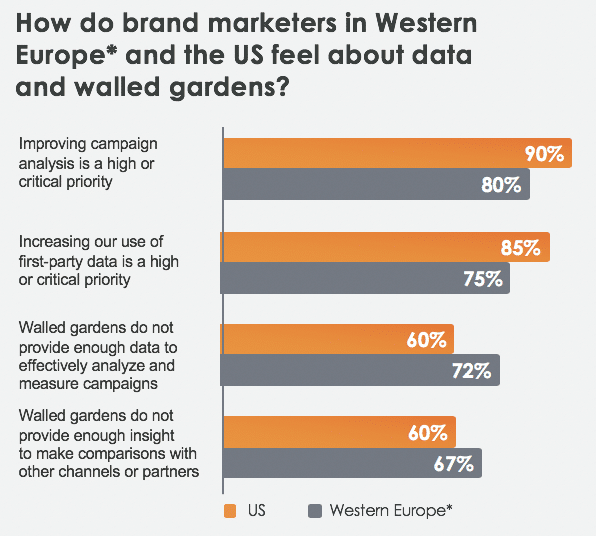
For brands, consumer insights are critical to making the right investment decisions for their product pipeline. Walled gardens offer very little to brands in this respect, and collaborating with other retailers can help them access consumer insights at scale.
Impact in 2020: Owning the customer relationship will be key.
To avoid being overly dependent on Amazon, Facebook, and Google, brands and retailers will need to team up and find ways to own the customer relationship – and the data that goes with it.
5. AI will gain wider adoption in digital marketing.
In 2018, a number of digital marketing companies announced their investments in artificial intelligence (AI) to develop solutions offering advanced personalization and better user engagement using machine learning.
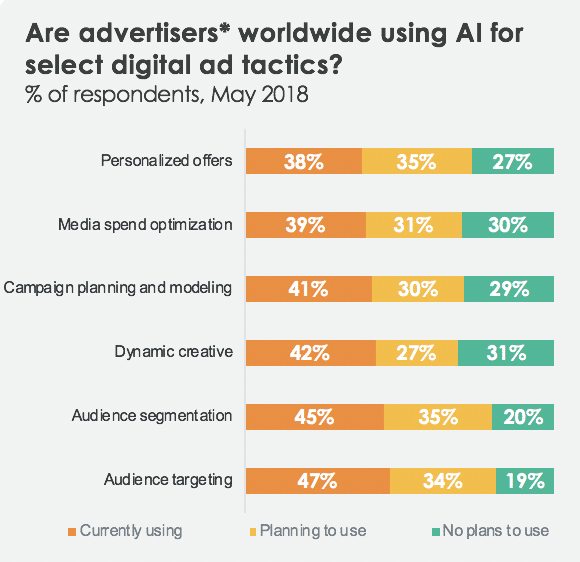
AI will enable marketers to better understand their audiences and deliver highly relevant and personalized messaging — a trend that will drive more advertising budget online in 2019.
Impact in 2020: Companies with large datasets will lead in AI.
Companies with large data sets and strong computational advertising capabilities will start to take the lead in developing and offering improved AI-based digital advertising solutions and systems to prevent ad fraud.
6. Digital ad operations will move more in-house.
Cloud-based and AI solutions will enable brands to shift their digital media buying operations from agencies to more in-house.
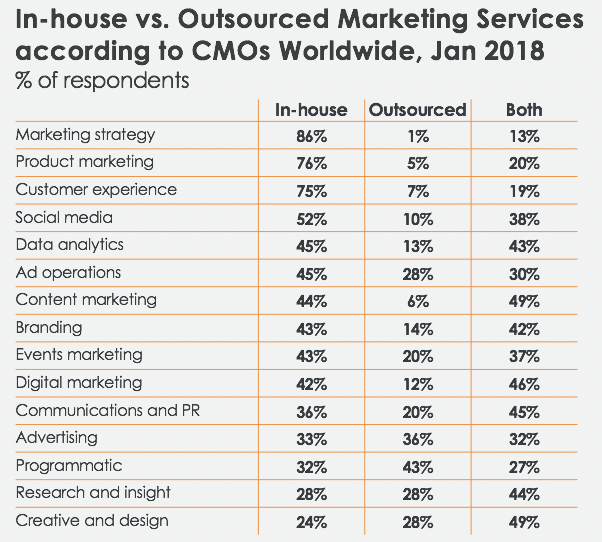
Note: among those with budget responsibility of top 15 marketing functions; numbers may not add up to 100% due to rounding.
The current high focus and ongoing developments surrounding the regulation of consumer data will accelerate this trend as brands and retailers will want to have greater ownership and control of their user data. Additionally, bringing ad operations in-house can lead to significant cost savings and quicker turnaround time.
Impact in 2020: Control over user data will be a huge priority.
In an effort to have greater control over user data and ad placement, more companies will continue to move their ad operations, including paid social, display, and programmatic buying, in-house.
7. Voice and visual tech marketing usage will grow.
The use of visual and voice (grouped under sensory) tech in digital marketing will become more apparent in 2019.
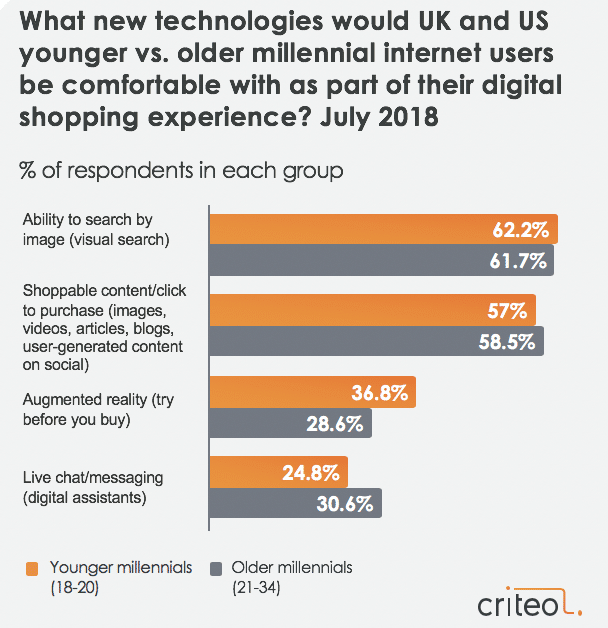
Text search and visuals are important when consumers search for products. With voice search, engagement becomes even more convenient and meaningful for both marketers and consumers across each stage of the purchase journey.
According to Gartner, brands that redesign their websites to support visual and voice search and provide more interactive and engaging experiences will see up to a 30% rise in digital commerce revenues by 2021*.
*Smarter with Gartner, “Top 5 Marketing Predictions for 2018”, April 2018
Impact in 2020: Search-based micro-moments will win.
Brands and retailers that take the lead in optimizing their websites for voice and visual search will win shoppers looking for instant information on-the-go, allowing them to create more engaging and effective interactions with consumers.
Top Takeaways for Digital Marketing Success:
Find opportunities to grow outside of walled gardens.
Tech giants will face even greater scrutiny over their use of consumer data and their operational policies in 2019. Retailers and brands must look for ways to collaborate and develop growth opportunities outside of walled gardens while having greater control of their customer data.
Streamline your user experiences across devices and channels.
Machine learning and predictive analytics will help marketers truly connect with their shoppers in new and meaningful ways. This will bring significant improvements in conversion rates while reducing cart abandonment and ad-fraud.
Combine consumer data with the right advertising technologies.
Optimize your data strategy to deliver memorable customer experiences, and personalize your offerings to connect with your shoppers in more meaningful ways. Video and voice ads are primed to drive even better results for your campaigns.























